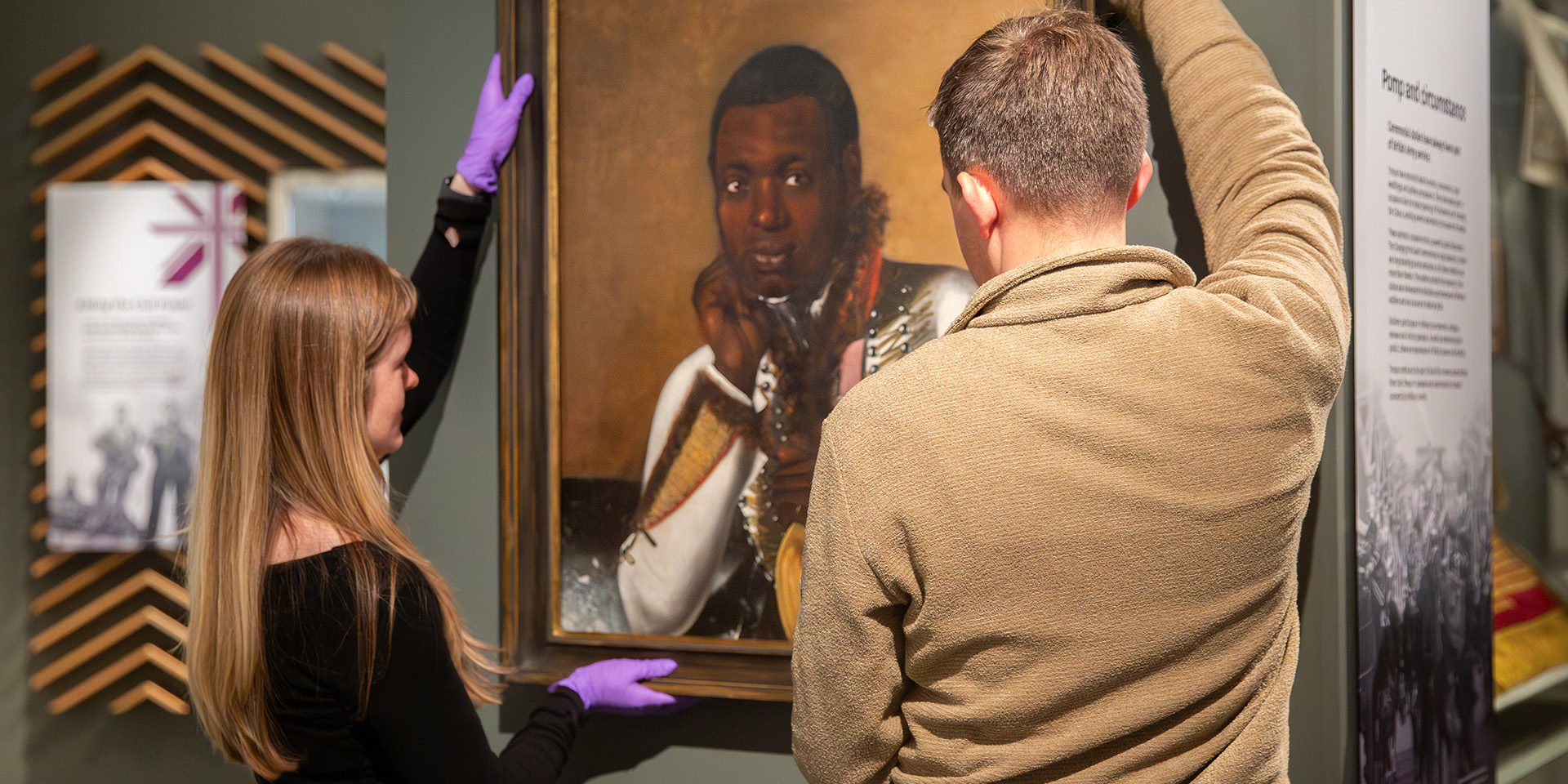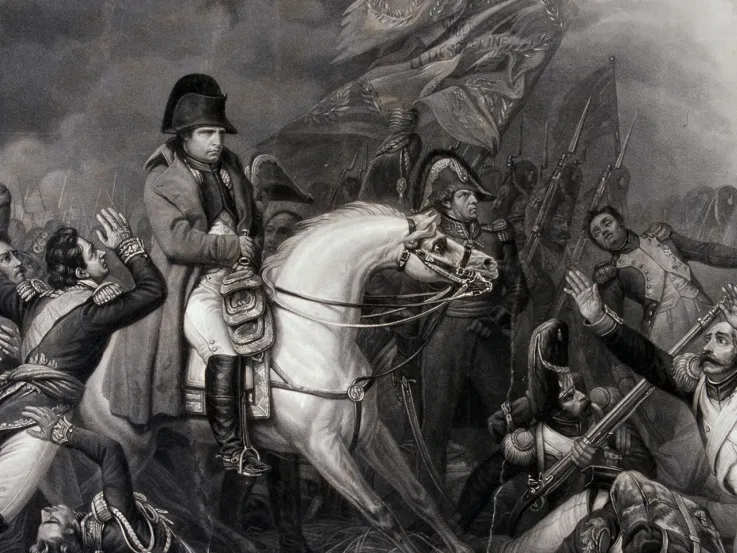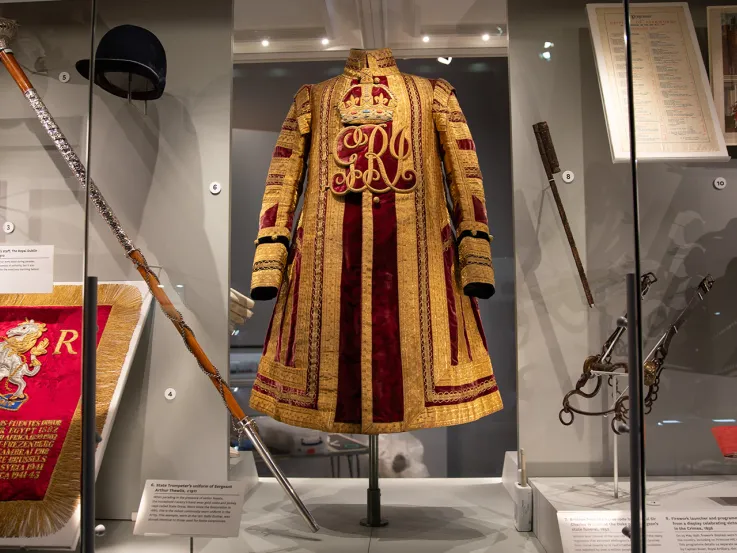National Army Museum solves the mystery of unknown Waterloo soldier

Installing the portrait in the Army at Home gallery
Tuesday, 21 October 2025
When the National Army Museum acquired the portrait of a Napoleonic military musician, the identities of both the soldier and the painter were unknown. Now, experts believe they have uncovered the story behind this unique artwork, which dates from the aftermath of Wellington’s victory over Napoleon at the Battle of Waterloo in 1815.
The National Army Museum, with support from Art Fund and private donors, acquired the exceptionally rare early 19th-century portrait of an unknown Black bandsman earlier this year. He is wearing a Waterloo Medal, the first British campaign medal awarded to soldiers regardless of rank. Only nine Black soldiers are known to have received the Waterloo Medal.
Depictions of Black military musicians appear occasionally in 18th- and 19th-century art, but paintings featuring an identifiable individual are extremely scarce, and portraits of non-white veterans from Waterloo are even more rare.
This made the painting special, but the curators and one of the Museum’s trustees were determined to solve the mysteries behind the image.
Identification
The bandsman is holding a cymbal and is depicted with a fur pelisse, suggesting that he was a percussionist in a cavalry regiment. These details helped to narrow down the possibilities until a likely candidate emerged: Thomas James.
Born in 1789, Thomas James came from Montserrat in the Caribbean and served with the 18th Light Dragoons. At Waterloo he did not take part in the battle, but was severely wounded while defending officers’ baggage from looters. Alongside others in the detachment, he was awarded the Waterloo Medal.
In the early 19th century, military musicians played a vital role both on and off the battlefield. Drums, fifes and trumpets were used to relay commands during combat, while bands provided entertainment, boosted morale and helped recruit new soldiers.
James continued to serve for a few years before leaving the service and receiving his military pension.
The Museum’s curators have now attributed the work to Thomas Phillips RA (1770–1845), a prominent artist at the time who painted many significant society figures. It is believed that a senior officer may have commissioned the portrait of James in gratitude for his efforts. It is likely to have been displayed in an officers’ mess or similar Army establishment, but over time, Thomas’s identity was lost.
Although the identification is not completely certain, the Museum’s research shows that James is very likely to be the mystery musician.
Analysis and conservation
After acquiring the painting, the Museum worked with Lincoln Conservation (University of Lincoln) to conduct an in-depth analysis of the artwork using specialist techniques.
Lincoln were asked to conserve the painting, making it ready for display and to undertake in-depth cross-sectional sampling, polarised light microscopy, infrared photography, and X-ray fluorescence (XRF). This work enabled a deeper understanding of the materials used by the artist and confirmed the date of its creation, helping uncover original details and renewing the painting to its former glory.
Now the portrait will go on permanent display in the National Army Museum’s Army at Home gallery, meaning that visitors can see the remarkable painting and learn more about Thomas James and his story.
Justin Maciejewski, Director of the National Army Museum, said:
‘We are proud to have uncovered this story of comradeship and courage, which will help us engage and inspire visitors from many different communities across London, the UK and around the world. This remarkable portrait of Thomas James reminds us that our Army has always relied on soldiers and service personnel from many different backgrounds, who have come together for common cause – whether to face Napoleon, Hitler, or more recent threats to peace and security.’
Jenny Waldman, Director, Art Fund, said:
'This fascinating painting captures the story of a soldier who might otherwise have been forgotten. I’m thrilled that Art Fund has been able to support the National Army Museum to acquire this remarkable portrait, and it's exciting to see how their team has uncovered new insights, including identifying the artist as Thomas Phillips RA. Now on permanent display, the painting will inspire visitors to the National Army Museum and bring this important piece of history to life.'
Rhiannon Clarricoates, Co-Director of Lincoln Conservation, said:
‘Our team worked meticulously to remove layers of discoloured varnish and non-original overpaint which revealed fine details and highlights not previously visible, allowing the public to experience the artwork as it was originally intended. Working together with Tager Stonor Richardson, our analysis of the artwork allowed a greater understanding of the original techniques and materials, alluding to its high quality. It has been a privilege to contribute to this project, which has safeguarded not only the physical integrity of the painting but also its cultural and historical significance for future generations.’
Notes to editors
For more information and interview requests, please contact:
- press@nam.ac.uk
- 020 7881 2344
Join in the conversation on:
- X: @NAM_London
- Facebook: facebook.com/NationalArmyMuseum
- Instagram: @nam_london
- YouTube: @NationalArmyMuseumUK
About the National Army Museum
The National Army Museum shares the history and heritage of our soldiers and their service in the Army, across the globe and down the centuries. Through our collections we explore the history of the Army from its origins to the present day. We aim to engage and inspire everyone with the stories of our soldiers and how their service shapes our world; past, present and future.



